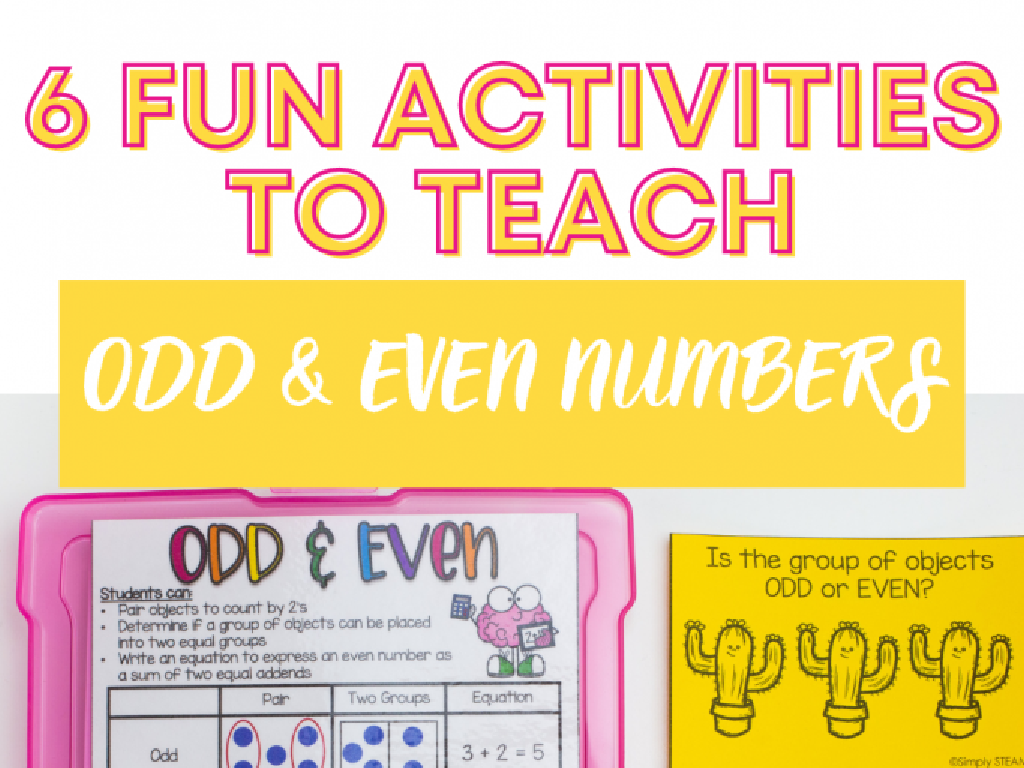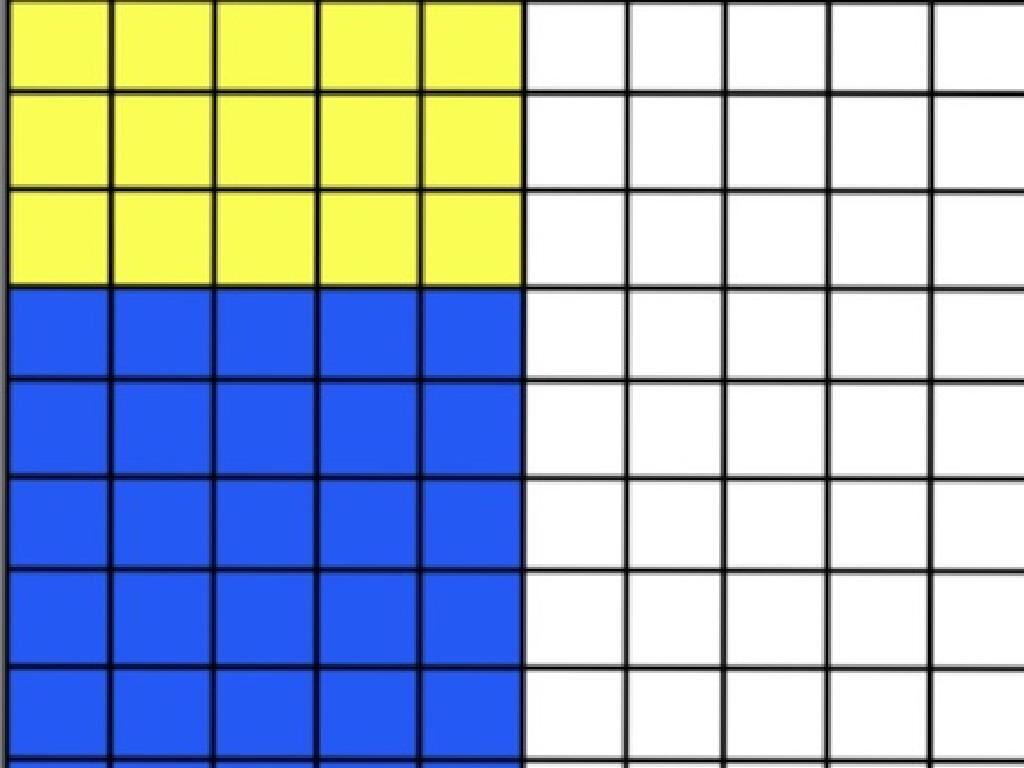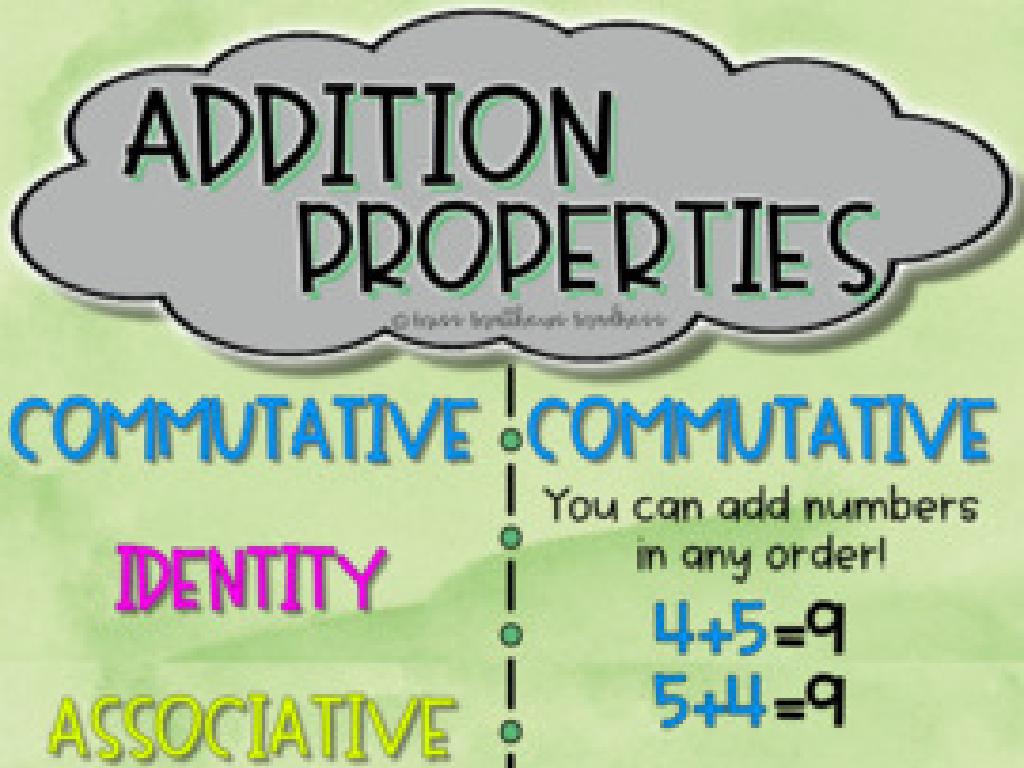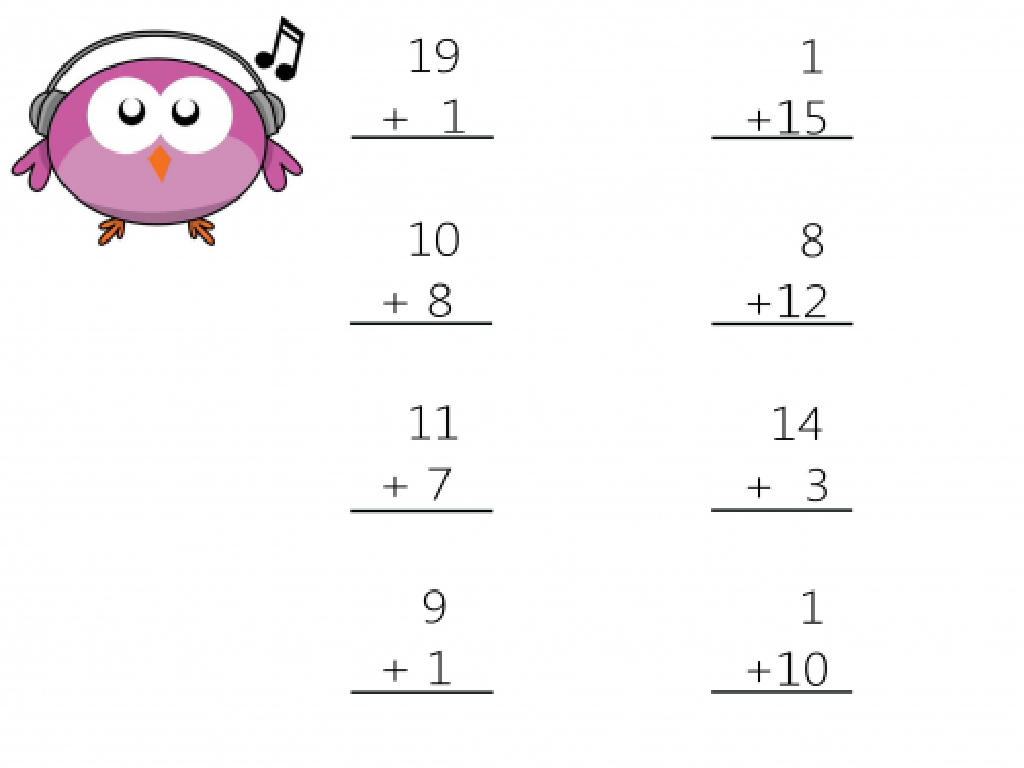Choose Metric Units Of Distance
Subject: Science
Grade: Fifth grade
Topic: Units And Measurement
Please LOG IN to download the presentation. Access is available to registered users only.
View More Content
Metric Units of Distance
– Why measurement matters
Measurement helps us describe and understand the world.
– Overview of measurement units
– Exploring metric distance units
Metric units include millimeters, centimeters, meters, and kilometers.
– Practical uses of metric measurements
We use these units to measure length or distance in everyday situations.
|
This slide introduces the concept of measurement and its significance in science and everyday life. Start by discussing why measurement is essential, such as for accuracy in science experiments, construction, and navigation. Provide a brief overview of different systems of measurement, emphasizing the metric system as a standard used globally. Focus on metric units of distance, explaining each unit’s relation to the others (e.g., 1000 millimeters in a meter, 100 centimeters in a meter). Conclude with examples of when to use each unit, like using meters to measure the height of a tree or kilometers for the distance between two cities. Encourage students to think of their own examples and understand when to use each unit appropriately.
Understanding the Metric System
– Global measurement system
– Based on multiples of 10
– Like 10 mm in 1 cm, 100 cm in 1 m
– Common units: meters, liters, grams
– Meters for length, liters for volume, grams for mass
– Easy conversion between units
– Use the power of 10 to switch: 1 km = 1000 m
|
The metric system is an international standard for measuring various quantities. It’s used almost everywhere in the world and is based on the number 10, which simplifies calculations and conversions. For distance, the meter is the basic unit, with other units such as millimeters, centimeters, and kilometers representing either fractions or multiples of a meter. Liters measure volume, and grams measure mass. Emphasize the ease of converting between units by multiplying or dividing by 10 and its powers. Provide examples of each unit in context, such as the length of a classroom in meters or the mass of a textbook in grams.
Metric Units of Distance
– Meter (m): Basic length unit
– A meter is about the height of a doorknob from the floor.
– Kilometer (km): For longer distances
– One kilometer equals 1,000 meters, like the distance of a school track.
– Centimeter (cm): For short lengths
– Millimeter (mm): For tiny distances
– A millimeter is as wide as a pencil tip.
|
This slide introduces students to the metric units of distance commonly used in science. The meter is the fundamental unit of length in the metric system, and it’s a good starting point for understanding other units. Kilometers are suitable for measuring the distance between places, like from home to school. Centimeters and millimeters are smaller units used to measure things like the width of a book or the thickness of a pencil. Use everyday objects to help students visualize these measurements. For example, a meter is around the distance from the floor to a doorknob, and there are 100 centimeters in a meter. Encourage students to think of examples of when they would use each unit of measurement.
Choosing Metric Units of Distance
– Kilometers for city distances
– e.g., from New York to Boston
– Meters for room lengths
– How long is our classroom?
– Centimeters for book widths
– How wide is your textbook?
– Millimeters for small objects
– The thickness of your pencil
|
This slide aims to help students understand the appropriate metric units of measurement for different distances. Kilometers are used for longer distances, such as those between cities. Meters are suitable for measuring spaces like the length of a room. Centimeters are smaller units perfect for the width of everyday items like books. Millimeters are even smaller and are ideal for measuring tiny objects like the diameter of a pencil. Encourage students to think of other examples where these units might be used and to practice measuring items around them to get a tangible sense of the scale of each unit.
Converting Metric Units of Distance
– Learn metric prefixes: kilo-, centi-, milli-
– ‘kilo-‘ means 1000 units, ‘centi-‘ means 1/100 of a unit, ‘milli-‘ means 1/1000 of a unit
– Convert units with multiplication/division
– Multiply to convert to a smaller unit, divide to convert to a larger unit
– Example: 5 meters to centimeters
– 5 meters = 5 x 100 centimeters = 500 centimeters
– Example: 3 kilometers to meters
– 3 kilometers = 3 x 1000 meters = 3000 meters
|
This slide introduces students to the concept of metric unit conversion, focusing on understanding the meaning of different prefixes and how to apply multiplication or division to convert between units. Emphasize the prefixes ‘kilo-‘, ‘centi-‘, and ‘milli-‘ as they are commonly used in measuring distance. Provide clear steps for conversion: to convert to a smaller unit (like meters to centimeters), multiply; to convert to a larger unit (like kilometers to meters), divide. Use the practice examples to demonstrate the process, and encourage students to solve these conversions on their own. Prepare additional examples for in-class practice to reinforce the concept.
Choosing the Right Metric Units of Distance
– Importance of correct distance units
– Metric units in professional fields
– Used by scientists, engineers, and builders for precision
– Measuring furniture with metric units
– For example, deciding what size bed fits in a room
– Using metrics in sports distances
– E.g., measuring how far a soccer ball is kicked
|
Understanding the importance of selecting the appropriate metric unit for measuring distance is crucial for accuracy in everyday life and professional settings. This slide emphasizes the practicality of metric units in various scenarios. Professionals like scientists, engineers, and builders rely on these units for precise calculations and designs. In everyday life, we use metric units to measure furniture to ensure it fits in our space or to know the distance covered in sports. Encourage students to think of times they have used or could use metric measurements in their daily activities and to understand how these units make communication and comparison easier and more universal.
Class Activity: Measure and Convert!
– Measure classroom objects
– Convert measurements
– Use millimeters, centimeters, and meters
– Share with the class
– Understand metric units
– Learn why we use metric for distance
|
This interactive class activity is designed to help students understand and apply their knowledge of metric units of distance. Provide students with rulers or measuring tapes that display millimeters, centimeters, and meters. Have them measure various objects in the classroom, such as a desk, a book, or the length of the chalkboard. Then, guide them to convert those measurements into different metric units to see the relationship between them. For example, 10 millimeters is 1 centimeter, 100 centimeters is 1 meter. After measuring and converting, students will share their findings with the class, explaining the process they used. This will reinforce their understanding of metric units and the importance of accurate measurement in science. Possible activities include measuring the height of a plant, the length of a string, or the width of a textbook, and then converting those measurements from centimeters to meters or millimeters to centimeters.
Conclusion: Metric Units of Distance
– Review metric distance units
– Importance of correct units
– Using the right unit is crucial for accuracy in science and everyday life.
– Encourage class questions
– Discuss today’s lesson
– Let’s talk about what we learned and any new ideas we have.
|
As we wrap up today’s lesson, it’s important to revisit the metric units of distance we’ve discussed: millimeters (mm), centimeters (cm), meters (m), and kilometers (km). Emphasize to students the necessity of choosing the appropriate unit for different scenarios, such as using centimeters to measure a pencil’s length or kilometers for the distance between two cities. Encourage the students to ask any lingering questions they might have about the metric system or share insights they’ve gained. Facilitate a discussion that allows students to reflect on the lesson and solidify their understanding of when and how to apply each unit of distance in real-world contexts.






